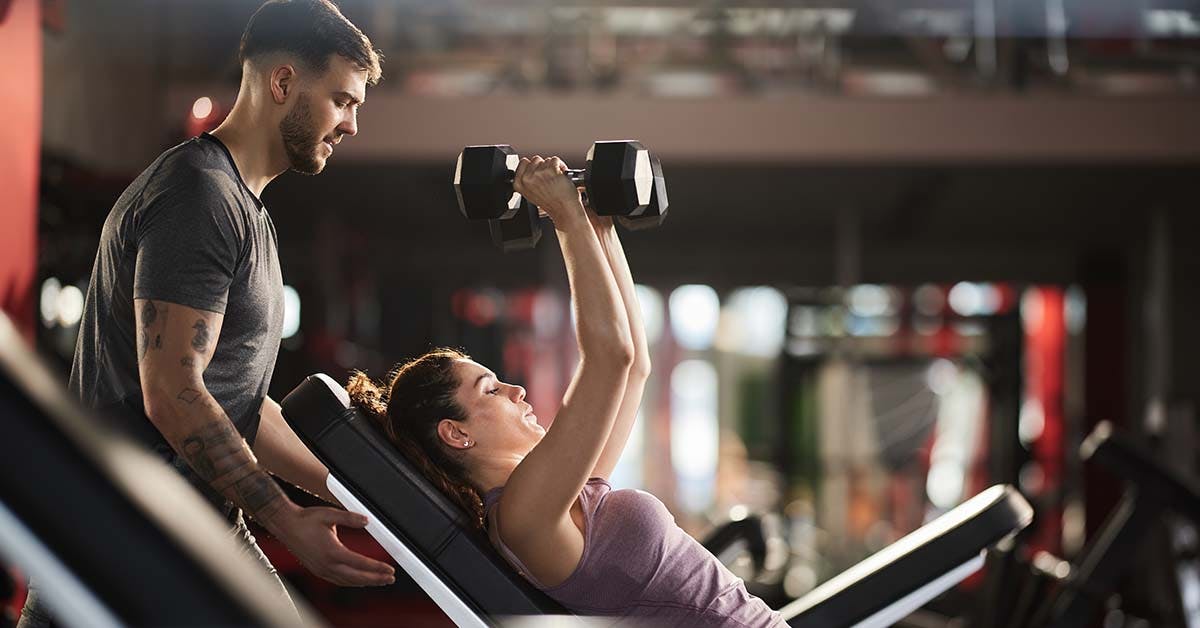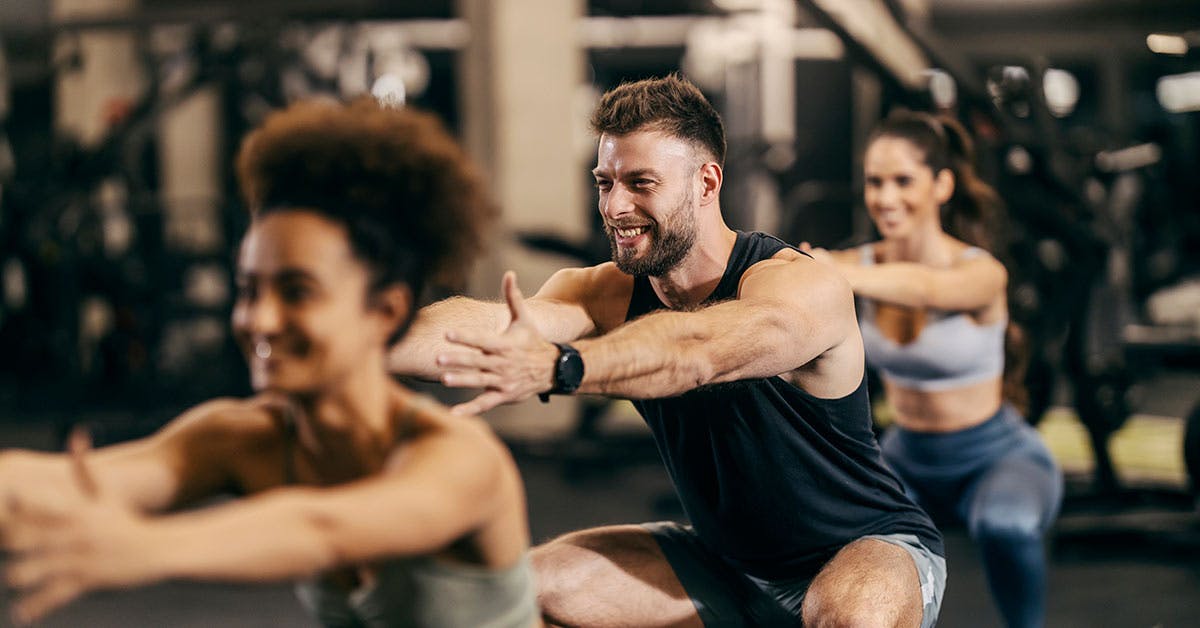14 Jan 2025
How to Become a Qualified Personal Trainer
Becoming qualified as a Personal Trainer is a great way to enter the fitness industry and enjoy a rewarding career.
The following article will act as the go-to guide for any prospective personal trainers hoping to understand more about this exciting role and provide the pathways you can take to turn that passion into your new career.
What Is Personal Training?
A certified personal trainer provides guidance and supervision for various forms of exercise. These sessions can be conducted with, either individuals or a small group and can take place in a variety of including inside gyms, private properties, and outdoor spaces.
What Do Personal Trainers Do?
Personal trainers are qualified fitness professionals who have completed formal training to learn the skills needed to deliver safe and effective exercise programs to individuals and groups. They are responsible for adjusting their client’s mindset and training them with the right techniques in order to improve the quality of their lives.
A successful personal trainer has a strong interest in fitness and is passionate about helping people to achieve their health goals. The relationship between a personal trainer and their clients is built on mutual trust. Therefore, authenticity is important. It is also beneficial for everyone involved that the personal trainer practices what they preach and lives an active lifestyle.

What Qualifications Do You Need to be a Personal Trainer?
Certificate IV in Fitness
Kick-start your fitness career with a SIS40221 Certificate IV in Fitness. This course will teach you how to undertake client health and fitness assessments and specialised exercise programs while also extending your competencies in fitness planning, training legalities, and motivational psychology.
Certificate III in Fitness
In order to enrol in the Certificate IV in Fitness, you are required to complete your SIS30321 Certificate III in Fitness. This course provides the foundational knowledge of fitness and training fundamentals.
Complete Personal Training Course
Our Complete Personal Training Course has everything you need to succeed in the fitness industry. Complete two nationally recognised qualifications - the Certificate III in Fitness and the Certificate IV in Fitness— gaining the skills and knowledge to thrive as a Personal Trainer and enhance your fitness career.
Fast-Track Personal Training Course
By enrolling in the Fast-Track Personal Training Course, you will complete the core entry requirement units of Certificate III before moving on to Certificate IV meaning that you will be equipped with everything you need to know to work effectively as a personal trainer, including how to operate and manage a small business.

How Do You Gain Experience as a Personal Trainer?
When you enrol in a Certificate IV in Fitness, Fast-Track Personal Training Course or Complete Personal Training Course with one of our leading gym network partners, you’ll gain access to our Graduate Placement Assistance.
This qualification combines self-paced online learning with the additional support of weekly partner mentorship, with each practical tutorial delivered to a small group of students in one of our leading network partners' gym environments. All are conducted by a fitness professional endorsed by the Australian Institute of Personal Trainers, who are highly qualified Personal Trainers with years of industry experience.
Why Be a Personal Trainer?
Physical health is an important part of our lives and improving it can lead to other important benefits such as improving mental health and the overall quality of how we experience life. It is for this reason that one of the most significant reasons for becoming a personal trainer is it is a rewarding career pathway. You are responsible for improving the health and fitness of your clients which can be a positive and transformative process for both the client and trainer.
As a personal trainer, you will also enjoy greater flexibility with the option of becoming your own boss and setting your own hours so that you can have room in your life for family and friends.
Personal Trainer Skills
There is a lot more that goes into being a successful personal trainer than running state-of-the-art exercise programs. Below are just some of the essential skills that an upstart personal trainer can benefit from.
Stay Up to Date with Industry Knowledge
To become successful as a personal trainer, you need to make sure you’re staying in the know about the changes happening in the health and fitness industry. It helps to read the latest industry news and be willing to grow and adapt your PT business as needed. There’s also a lot of misinformation that spreads in the fitness sector, so it will be your job to let clients know in case they are misinformed.
Create Individual Programs
The professional and personable relationship you build with your clients is paramount, so it’s important you take the time to learn more about your client as an individual. This way you’ll be able to better understand their goals, limitations, what’s worked for them in the past, what hasn’t, and from there tailor a personalised program to meet their specific needs. In response, your client will grow to trust that what you are offering is working for them.
Communication & Patience
If there was any skill or trait that a personal trainer could benefit from, it’s having patience. Fitness isn’t a destination – it’s a lifestyle and a journey, which means results do not happen overnight. With all the obstacles, setbacks, and frustrations that your clients will face along the way, it’s pivotal they have a patient personal trainer to help guide them through the process with encouragement and trust the results will come.
If you have a patient approach to training and come with an acceptance that everyone progresses at different stages, you’re well on your way to becoming a more successful personal trainer in the business.
Advertising Effort
At the end of the day, you’re running a business. The more you put your name out there, the more people it will reach and more business you will drum up for yourself. There are so many ways and platforms you can utilise to advertise your PT business, whether it’s posting on social media, creating high-quality content for your website, investing in traditional billboard advertising, or wearing merchandise featuring your brand logo. You are 100% more likely to gain new clients by taking every opportunity to promote your business.

Personal Trainer Salary
Like any other job, it has to take care of you and cover the bills. For a run-down on how much you could earn as a personal trainer, check out this article. If you are choosing to go the independent business route, don’t worry because, with your qualifications from AIPT, we can help you hit the ground running and be on your way to earning comfortably.
Personal Trainers in Australia
The fitness industry in Australia is one of the biggest in Australia and is showing no signs of serious decline despite it being seriously affected by the COVID-19 pandemic.
According to the AISC (Australian Industry and Skills Committee), employment levels in the fitness industry rose substantially over the period between 2001 and 2019 (from around 43,100 to 117,800); employment levels dropped by almost half in 2020 to 61,000 before increasing again in 2021 to 104,200, where this is expected to remain steady until 2025.
But don’t let that discourage you – because as the world opens back up and everything returns to normal, fitness will be one of the essential sectors.
Equip yourself with everything you need to begin your future in fitness with AIPT’s Complete Personal Training Course. Enquire now or call 1300 616 180 today.
Related Articles

Maximise the Rest of 2025 With Your Fitness Career
Finish 2025 strong. Learn how personal trainers can grow their fitness career, attract more clients and upskill before the final campus intake closes.

Career Opportunities in Fitness: Which Path is Right for You?
Explore career opportunities in fitness. Discover roles, salaries, and training pathways to start your health and fitness career today.

Industry Supplier
Proud member of

© Australian Institute of Personal Trainers | RTO Number 32363
